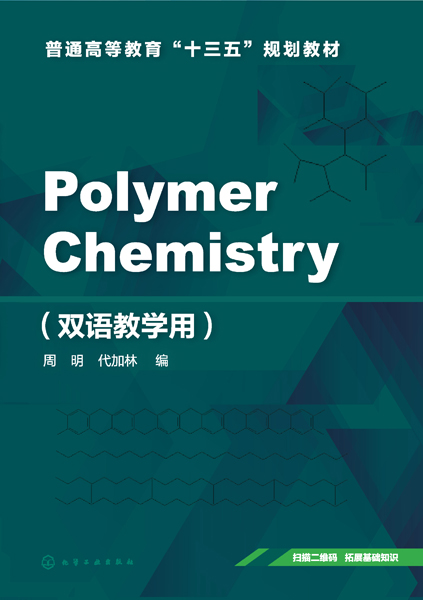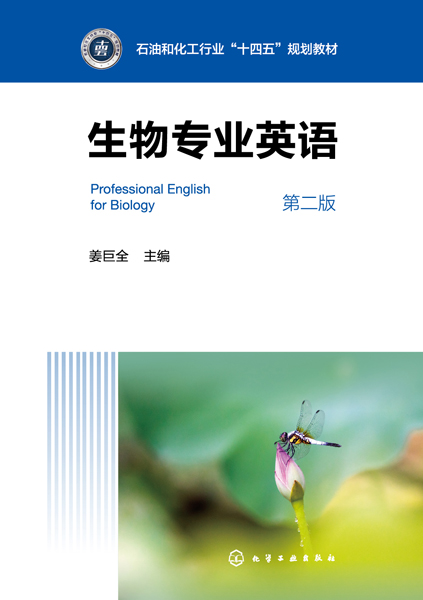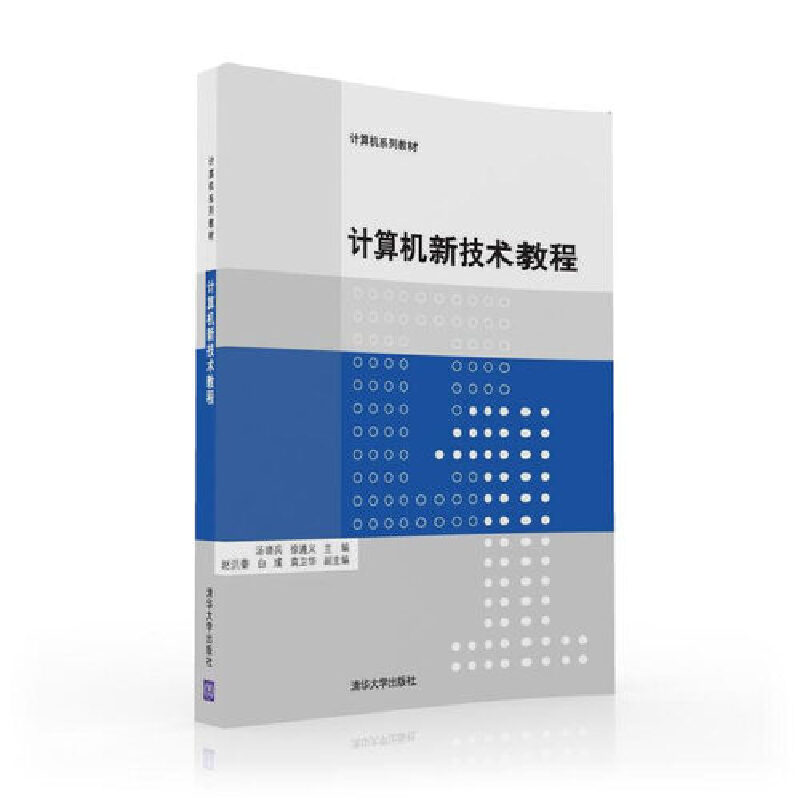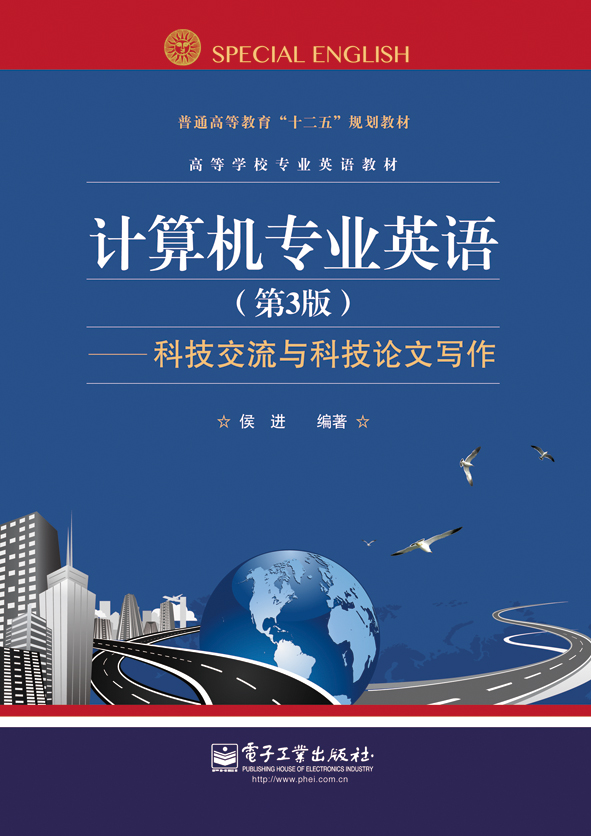- 清华大学出版社
- 9787302531418
- 1-1
- 282747
- 43202851-2
- 平装
- 16开
- 2019-09
- 295
- H319.36
- 英语
- 研究生(硕士、EMBA、MBA、MPA、博士)
内容简介
全书共十六章,详细介绍学术写作之准备过程、写作步骤及后续工作,帮助学生熟悉学术写作流程; 重点介绍学术论文的文体风格,以步骤和阶段思想介绍学术论文各部分内容的写作要点和行文规范;同时 还提供丰富的例句表达,供学生参考使用,便于学生提高学术英语写作能力,实现国际学术论文的发表。
目录
Contents
Chapter 1
Academic Writing.1
1.1 What Is Academic Writing.2
1.2 Different Categories of Academic Writing.2
1.2.1 Academic Articles.2
1.2.2 Academic Books2
1.2.3 Conference Papers.3
1.2.4 Poster Papers.3
1.3 Different Categories of Academic Articles4
1.3.1 Letters4
1.3.2 Research Notes4
1.3.3 Articles.4
1.3.4 Supplemental Articles.4
1.3.5 Review Articles.4
1.3.6 Data Papers5
1.3.7 Video Papers5
1.4 Purposes of Academic Writing5
Chapter 2
The Process of Academic Writing7
2.1 Academic Writing as a Process8
2.2 Different Stages in the Process of Academic Writing9
2.2.1 Preparation for Writing.9
2.2.2 Academic Writing Per Se.11
2.2.3 Sending Papers to Conferences and Seminars.12
2.2.4 Targeting a Journal13
2.2.5 Preparing Your Paper for Submission.13
2.2.6 Reviewing Process.13
2.2.7 Technicalities of Proofs and Copyright14
Chapter 3
Academic Reading and Academic Resources.17
3.1 Significance of Academic Reading to Academic Writing18
3.2 Habits and Skills for Academic Reading18
3.2.1 Forming the Habit of Reading18
3.2.2 Reading Actively, Not Passively.19
3.2.3 Developing a Critical Eye for Writing Style.20
3.2.4 Taking Notes20
3.3 How to Find Academic Resources Online20
3.3.1 Skimming the Internet.21
3.3.2 Looking Through Library Database of Your University21
Chapter 4
Structure and Style.23
4.1 Typical Essay Structure.24
4.1.1 Introduction25
4.1.2 Argument Paragraphs26
4.1.3 Conclusion27
4.2 Structure of Academic Writing28
4.3 Tips for Academic Writing.28
4.3.1 Writing Objectively.28
4.3.2 Writing Concisely.29
4.3.3 First Person vs Third Person.29
4.3.4 Inclusive Language.32
Chapter 5
Title.37
5.1 Functions of Titles38
vii
5.1.1 Generalizing the Text38
5.1.2 Attracting the Reader.38
5.1.3 Facilitating the Retrieval39
5.2 Types of Titles39
5.3 Linguistic Features of Titles41
5.3.1 Using an Incomplete Sentence.41
5.3.2 Using More Nouns, Noun Phrases, and Gerunds41
5.4 Requirements of Writing Titles42
5.4.1 To Be Brief and Concise42
5.4.2 To Be Specific43
5.4.3 To Avoid Question Titles43
5.4.4 To Be Unified43
5.4.5 To Be Standard43
Chapter 6
Authors and Affiliations47
6.1 Functions of Authors and Affiliations48
6.1.1 Bearing Authors’ Responsibilities.48
6.1.2 Facilitating Retrieval and Correspondence48
6.1.3 Heightening Celebrity.48
6.2 Implications of Authorship48
6.2.1 Authorship in Social Sciences.49
6.2.2 Authorship in Medical Sciences.50
6.2.3 Authorship in Natural Sciences51
6.3 Requirements of Writing Authors and Affiliations51
6.3.1 Unifying Printing Format51
6.3.2 Omitting Profession Titles52
6.3.3 Paying Attention to Orders of Chinese and English Names.52
6.3.4 Paying Attention to Affiliation52
6.3.5 Clearly Indicating Correspondent Author52
6.3.6 Indicating Authors’ Responsibilities if Necessary.53
Chapter 7
Abstract.55
7.1 Types of Abstracts.56
7.2 Format of Abstracts56
7.3 Components of Abstracts.57
7.3.1 Topic Sentences57
7.3.2 Supporting Sentences.58
7.3.3 Concluding Sentences.59
7.4 Structured Abstracts.59
7.5 Sample Analysis63
Chapter 8
Key Words.67
8.1 Functions of Key Words68
8.2 Disciplinary Differences of Key Words68
8.3 Who Supplies Key Words.69
8.4 Features of Key Words70
8.4.1 Nominalization70
8.4.2 Limited Number.70
8.4.3 Designated Choice70
8.5 How to Select Key Words.70
8.6 How to Arrange Key Words.72
8.6.1 Using Required Terms72
8.6.2 Placing in the Right Location72
8.6.3 Spacing the Key Words72
Chapter 9
Introduction75
9.1 Functional Elements of the Introduction Section.76
9.1.1 Introducing the Subject76
9.1.2 Limiting the Research Scope.77
9.1.3 Stating the General Purpose77
9.1.4 Explaining the Writing Arrangement.77
9.2 Components of the Introduction Section.77
9.3 Usual Process of Writing the Introduction Section.78
9.3.1 Starting with the Research Background78
9.3.2 Moving Towards the Existing Problem78
9.3.3 Focusing on the Present Research78
9.3.4 Illustrating the Writing Structure79
9.4 Literature Reviews.81
9.4.1 Purposes of Literature Reviews81
9.4.2 Strategies for Presenting Literature Reviews.81
9.4.3 Problems Concerning Writing Literature Reviews.84
9.4.4 False Assumptions Concerning Writing Literature Reviews.84
Chapter 10
Textual Developments.93
10.1 Types of Research Papers94
10.1.1 Papers of Theoretical Nature94
10.1.2 Papers of Experimental Nature.96
10.1.3 Papers of Combined Natures.96
10.2 Avoiding Logical Problems98
10.2.1 Avoiding Logical Fallacies.98
10.2.2 Avoiding Logical Flaws100
10.2.3 Avoiding Conspiracy Theories100
Chapter 11
Methods and Materials.103
11.1 Functions of the Methods and Materials Section.104
11.2 Structure of the Methods and Materials Section104
11.3 Ingredients of the Methods and Materials Section.106
11.3.1 Subjects (Participants).106
11.3.2 Materials107
11.3.3 Design and Procedure.108
11.4 How to Write the Methods and Materials Section108
11.4.1 Principles to Follow108
11.4.2 Supplementary Points to Notice.111
Chapter 12
Results121
12.1 Importance of the Results Section122
12.2 Requirements of Writing the Results Section.122
12.3 Two Moves Analysis of the Results Section.123
12.4 Twelve Steps for Writing the Results Section.123
12.5 Tables and Graphs124
12.5.1 Constructing Tables125
12.5.2 Presenting Tables125
12.5.3 Presenting Graphs126
12.5.4 Sample Analysis.126
Chapter 13
Discussion135
13.1 Functions and Objectives of the Discussion Section.136
13.2 Elements to Include in the Discussion Section.137
13.2.1 Stating Major Findings of the Study137
13.2.2 Explaining Why Findings Are Important.137
13.2.3 Relating Findings to Those of Similar Studies.138
13.2.4 Considering Alternative Explanations of Findings138
13.2.5 Acknowledging the Study’s Limitations.138
13.2.6 Making Suggestions for Further Research.139
13.2.7 Giving ”Take-Home Messages” in the Form of a Conclusion.139
13.3 Things to Avoid in the Discussion Section139
13.3.1 Over Interpretation of the Results139
13.3.2 Unwarranted Speculation140
13.3.3 Inflating the Importance of Findings.140
13.3.4 Tangential Issues.140
13.3.5 Too Much Criticism.140
13.4 How to Write the Discussion Section.140
Chapter 14
Conclusion.147
14.1 Typical Contents of the Conclusion Section.148
14.1.1 Summing Up.148
14.1.2 Statement of the Conclusion148
14.1.3 Statement of Recommendations148
14.1.4 Graceful Termination.149
14.2 Common Problems in Writing the Conclusion Section149
14.2.1 Being Too Long149
14.2.2 Having Too Many Details149
14.2.3 Failure to Comment on Larger, More Significant Issues149
14.2.4 Failure to Reveal the Complexities of a Conclusion or Situation.150
14.3 Warnings and Suggestions for Writing the Conclusion Section150
14.3.1 Warnings.150
14.3.2 Suggestions151
14.4 Sample Analysis.151
Chapter 15
Supplementary Parts to Academic Writing.157
15.1 Acknowledgement158
15.2 References159
15.2.1 Styles of References.159
15.2.2 Reasons for Citing References161
15.2.3 Citing Page Numbers for Quotations in the Text.162
15.2.4 Using Appropriate Styles and References162
15.3 Footnotes.163
15.4 Correspondence Among Authors, Editors, and Referees.163
15.5 Proofs.165
15.6 Sample Letters.166
Chapter 16
Academic Publishing173
16.1 Targeting Academic Journals174
16.1.1 Impact Factors174
16.1.2 Useful Tips175
16.2 Delays in the Publishing Process.175
16.3 The Process of Refereeing176
16.4 Key Elements to the Success of Academic Publishing.178
16.4.1 Procrastination and Writer’s Block178
16.4.2 To Advocate Collaboration179
16.4.3 To Be Productive180
Bibliography183
Chapter 1
Academic Writing.1
1.1 What Is Academic Writing.2
1.2 Different Categories of Academic Writing.2
1.2.1 Academic Articles.2
1.2.2 Academic Books2
1.2.3 Conference Papers.3
1.2.4 Poster Papers.3
1.3 Different Categories of Academic Articles4
1.3.1 Letters4
1.3.2 Research Notes4
1.3.3 Articles.4
1.3.4 Supplemental Articles.4
1.3.5 Review Articles.4
1.3.6 Data Papers5
1.3.7 Video Papers5
1.4 Purposes of Academic Writing5
Chapter 2
The Process of Academic Writing7
2.1 Academic Writing as a Process8
2.2 Different Stages in the Process of Academic Writing9
2.2.1 Preparation for Writing.9
2.2.2 Academic Writing Per Se.11
2.2.3 Sending Papers to Conferences and Seminars.12
2.2.4 Targeting a Journal13
2.2.5 Preparing Your Paper for Submission.13
2.2.6 Reviewing Process.13
2.2.7 Technicalities of Proofs and Copyright14
Chapter 3
Academic Reading and Academic Resources.17
3.1 Significance of Academic Reading to Academic Writing18
3.2 Habits and Skills for Academic Reading18
3.2.1 Forming the Habit of Reading18
3.2.2 Reading Actively, Not Passively.19
3.2.3 Developing a Critical Eye for Writing Style.20
3.2.4 Taking Notes20
3.3 How to Find Academic Resources Online20
3.3.1 Skimming the Internet.21
3.3.2 Looking Through Library Database of Your University21
Chapter 4
Structure and Style.23
4.1 Typical Essay Structure.24
4.1.1 Introduction25
4.1.2 Argument Paragraphs26
4.1.3 Conclusion27
4.2 Structure of Academic Writing28
4.3 Tips for Academic Writing.28
4.3.1 Writing Objectively.28
4.3.2 Writing Concisely.29
4.3.3 First Person vs Third Person.29
4.3.4 Inclusive Language.32
Chapter 5
Title.37
5.1 Functions of Titles38
vii
5.1.1 Generalizing the Text38
5.1.2 Attracting the Reader.38
5.1.3 Facilitating the Retrieval39
5.2 Types of Titles39
5.3 Linguistic Features of Titles41
5.3.1 Using an Incomplete Sentence.41
5.3.2 Using More Nouns, Noun Phrases, and Gerunds41
5.4 Requirements of Writing Titles42
5.4.1 To Be Brief and Concise42
5.4.2 To Be Specific43
5.4.3 To Avoid Question Titles43
5.4.4 To Be Unified43
5.4.5 To Be Standard43
Chapter 6
Authors and Affiliations47
6.1 Functions of Authors and Affiliations48
6.1.1 Bearing Authors’ Responsibilities.48
6.1.2 Facilitating Retrieval and Correspondence48
6.1.3 Heightening Celebrity.48
6.2 Implications of Authorship48
6.2.1 Authorship in Social Sciences.49
6.2.2 Authorship in Medical Sciences.50
6.2.3 Authorship in Natural Sciences51
6.3 Requirements of Writing Authors and Affiliations51
6.3.1 Unifying Printing Format51
6.3.2 Omitting Profession Titles52
6.3.3 Paying Attention to Orders of Chinese and English Names.52
6.3.4 Paying Attention to Affiliation52
6.3.5 Clearly Indicating Correspondent Author52
6.3.6 Indicating Authors’ Responsibilities if Necessary.53
Chapter 7
Abstract.55
7.1 Types of Abstracts.56
7.2 Format of Abstracts56
7.3 Components of Abstracts.57
7.3.1 Topic Sentences57
7.3.2 Supporting Sentences.58
7.3.3 Concluding Sentences.59
7.4 Structured Abstracts.59
7.5 Sample Analysis63
Chapter 8
Key Words.67
8.1 Functions of Key Words68
8.2 Disciplinary Differences of Key Words68
8.3 Who Supplies Key Words.69
8.4 Features of Key Words70
8.4.1 Nominalization70
8.4.2 Limited Number.70
8.4.3 Designated Choice70
8.5 How to Select Key Words.70
8.6 How to Arrange Key Words.72
8.6.1 Using Required Terms72
8.6.2 Placing in the Right Location72
8.6.3 Spacing the Key Words72
Chapter 9
Introduction75
9.1 Functional Elements of the Introduction Section.76
9.1.1 Introducing the Subject76
9.1.2 Limiting the Research Scope.77
9.1.3 Stating the General Purpose77
9.1.4 Explaining the Writing Arrangement.77
9.2 Components of the Introduction Section.77
9.3 Usual Process of Writing the Introduction Section.78
9.3.1 Starting with the Research Background78
9.3.2 Moving Towards the Existing Problem78
9.3.3 Focusing on the Present Research78
9.3.4 Illustrating the Writing Structure79
9.4 Literature Reviews.81
9.4.1 Purposes of Literature Reviews81
9.4.2 Strategies for Presenting Literature Reviews.81
9.4.3 Problems Concerning Writing Literature Reviews.84
9.4.4 False Assumptions Concerning Writing Literature Reviews.84
Chapter 10
Textual Developments.93
10.1 Types of Research Papers94
10.1.1 Papers of Theoretical Nature94
10.1.2 Papers of Experimental Nature.96
10.1.3 Papers of Combined Natures.96
10.2 Avoiding Logical Problems98
10.2.1 Avoiding Logical Fallacies.98
10.2.2 Avoiding Logical Flaws100
10.2.3 Avoiding Conspiracy Theories100
Chapter 11
Methods and Materials.103
11.1 Functions of the Methods and Materials Section.104
11.2 Structure of the Methods and Materials Section104
11.3 Ingredients of the Methods and Materials Section.106
11.3.1 Subjects (Participants).106
11.3.2 Materials107
11.3.3 Design and Procedure.108
11.4 How to Write the Methods and Materials Section108
11.4.1 Principles to Follow108
11.4.2 Supplementary Points to Notice.111
Chapter 12
Results121
12.1 Importance of the Results Section122
12.2 Requirements of Writing the Results Section.122
12.3 Two Moves Analysis of the Results Section.123
12.4 Twelve Steps for Writing the Results Section.123
12.5 Tables and Graphs124
12.5.1 Constructing Tables125
12.5.2 Presenting Tables125
12.5.3 Presenting Graphs126
12.5.4 Sample Analysis.126
Chapter 13
Discussion135
13.1 Functions and Objectives of the Discussion Section.136
13.2 Elements to Include in the Discussion Section.137
13.2.1 Stating Major Findings of the Study137
13.2.2 Explaining Why Findings Are Important.137
13.2.3 Relating Findings to Those of Similar Studies.138
13.2.4 Considering Alternative Explanations of Findings138
13.2.5 Acknowledging the Study’s Limitations.138
13.2.6 Making Suggestions for Further Research.139
13.2.7 Giving ”Take-Home Messages” in the Form of a Conclusion.139
13.3 Things to Avoid in the Discussion Section139
13.3.1 Over Interpretation of the Results139
13.3.2 Unwarranted Speculation140
13.3.3 Inflating the Importance of Findings.140
13.3.4 Tangential Issues.140
13.3.5 Too Much Criticism.140
13.4 How to Write the Discussion Section.140
Chapter 14
Conclusion.147
14.1 Typical Contents of the Conclusion Section.148
14.1.1 Summing Up.148
14.1.2 Statement of the Conclusion148
14.1.3 Statement of Recommendations148
14.1.4 Graceful Termination.149
14.2 Common Problems in Writing the Conclusion Section149
14.2.1 Being Too Long149
14.2.2 Having Too Many Details149
14.2.3 Failure to Comment on Larger, More Significant Issues149
14.2.4 Failure to Reveal the Complexities of a Conclusion or Situation.150
14.3 Warnings and Suggestions for Writing the Conclusion Section150
14.3.1 Warnings.150
14.3.2 Suggestions151
14.4 Sample Analysis.151
Chapter 15
Supplementary Parts to Academic Writing.157
15.1 Acknowledgement158
15.2 References159
15.2.1 Styles of References.159
15.2.2 Reasons for Citing References161
15.2.3 Citing Page Numbers for Quotations in the Text.162
15.2.4 Using Appropriate Styles and References162
15.3 Footnotes.163
15.4 Correspondence Among Authors, Editors, and Referees.163
15.5 Proofs.165
15.6 Sample Letters.166
Chapter 16
Academic Publishing173
16.1 Targeting Academic Journals174
16.1.1 Impact Factors174
16.1.2 Useful Tips175
16.2 Delays in the Publishing Process.175
16.3 The Process of Refereeing176
16.4 Key Elements to the Success of Academic Publishing.178
16.4.1 Procrastination and Writer’s Block178
16.4.2 To Advocate Collaboration179
16.4.3 To Be Productive180
Bibliography183








